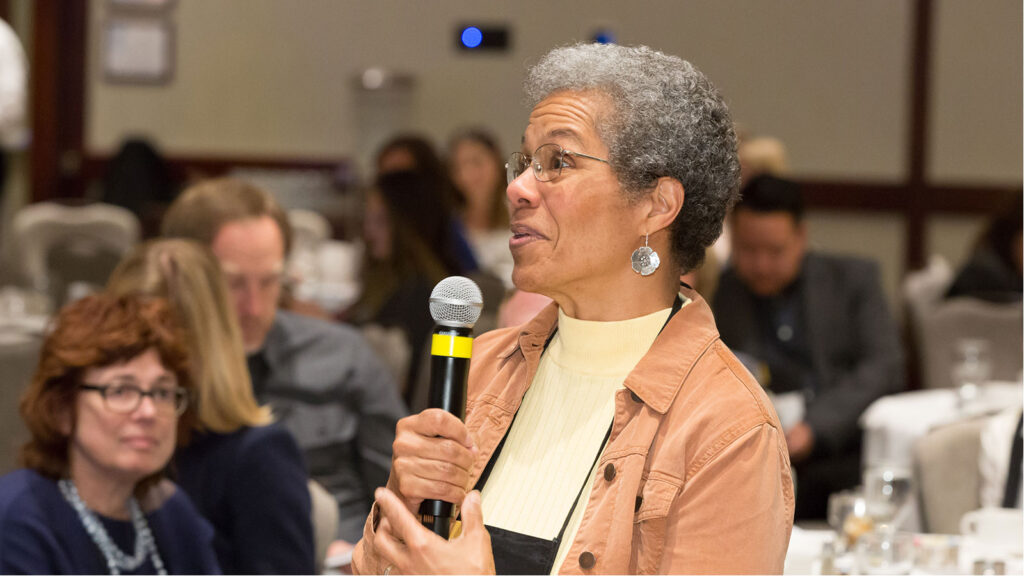Stanford Social Innovation Review Blog Series
Research shows that grantmakers that are more connected to their grantees—those that have an ear to the ground—are more likely to provide the support that nonprofits need to be successful; they are five times as likely to offer capacity-building support and two times as likely to offer multiyear support. We also know that tapping the knowledge and perspective of grantees and community members builds trust and helps shape more-effective solutions.
While we’re making progress as a field, foundations still aren’t as effective as they could be, because they aren’t taking time to cultivate open, trusting relationships with their grantees. Barriers that prevent us from building those authentic relationships include power dynamics, internal processes, and foundation culture. These barriers often don’t have straightforward “technical” solutions. Overcoming them requires that grantmakers confront the status quo, and change longstanding behaviors and practices.
Posts in this series:
Grantee Inclusion: What’s it all about?, by Lori Bartczak, vice president of programs at GEO
Including grantees in decision-making, program-building, and strategy is critical to effective social impact. While the things grantmakers “do” are important, authentic inclusion also requires that they embrace a new mindset.
Who’s Getting Paid to Advance Grantee Inclusion?, by Chris Cardona, program officer for philanthropy at the Ford Foundation
It’s time to recognize how inequity shapes funders’ choice of partners.
Ask Questions, First to Learn But Then to Act, by Sean Thomas-Breitfeld, co-director of the Building Movement Project
Now, more than ever, grantmakers are asking questions and working to learn with and from their grantees, but the lessons matter only if they inform future action.
Four Dating Tips to Sustain Strong Grantmaker-Grantee Relationships, by Kierra Johnson, executive director of Unite for Reproductive and Gender Equity (URGE)
Relationships take work — and those between grantees and grantmakers are no exception.
Four Ways to Bridge the Grantee-Grantmaker Power Gap in Collective Impact, by Robert Albright, associate director of the Collective Impact Forum
As grassroots and “grass-tops” groups come together to create collective impact, funders have the power to foster truly authentic engagement and co-ownership among all.
Walking a Different Kind of Grantmaker Walk, by Elizabeth Cushing, president and chief operating officer of Playworks
By actively moving into the roles of advocate and partner for grantees, grantmakers can cultivate trusting, transparent relationships that ultimately translate into social impact.
The Ripple Effect of Foundation Culture, by Kevin Bolduc, vice president of assessment and advisory services at the Center for Effective Philanthropy
Foundations’ internal practices and culture ripple out to grantees in meaningful ways, and it directly accelerates or impedes grantees’ effectiveness.
The Gift of Grantee Inclusion, by Eric Martin, senior leadership advisory and founder at Adaptive Change Advisors, and Tara Hickey, consultant with Cambridge Leadership Associates
Grantee inclusion requires learning, risk-taking, and letting go of cherished behaviors and ways of working to make progress.
Grantee Inclusion: A Step Towards Mutual Accountability?, by Justin Laing, senior program offer at the Heinz Endowments
Grantee inclusion is not sufficiently powerful to transform grantee-funder relationships, but it might present a vision for a sector that more evenly shares power.
Getting to the Heart of Healthy Funder-Grantee Relationships, by Amanda Broun, vice presidents of program and practice, Katie Johnes, director of sector advancement and convenings, at Independent Sector
Three practices successful social sector partnerships can adopt to improve their alignment and generate better results.
Pleasantly Surprised by What’s Inside Pandora’s Box, by Katie Eyes, senior program officer for health care at the Blue Cross and Blue Shield of North Carolina Foundation
It’s critical to test different approaches to grantee inclusion and to incorporate new learning along the way.
Start with a Shared Vision, by Brad Cameron, communications and knowledge management associate at the Winthrop Rockefeller Foundation
True grantee-funder partnerships are based on a shared vision of the future. Creating a strategy to achieve that vision requires listening and clearly defining roles.
Grantee Inclusion for Community Empowerment, by Lisa Ranghelli, senior director of assessment and special projects at the National Committee for Responsive Philanthropy
Grantee inclusion can help correct the power imbalance not only between foundations and nonprofits, but also between marginalized communities and the broader power structures that perpetuate inequity.
Winter Is Here, and the Wall Between Funders and Nonprofits Must Come Down, by Vu Le, executive director of Rainier Valley COrps
Grantmakers and nonprofits can face today’s pressing social issues only if we break down the walls between us and see each other as partners on the same side.

